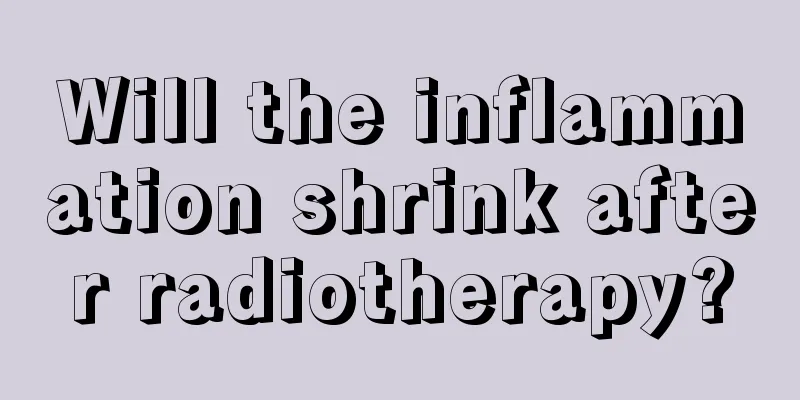Why do people with liver cancer faint? Four common treatment measures for liver cancer

|
Due to its high malignancy, rapid progression, difficulty in treatment, and short survival period, liver cancer has become the "king of cancer" that seriously threatens human health and life. The prognosis of liver cancer depends on whether it can be detected early and treated actively. Due to the insidious onset of liver cancer, there are usually no obvious symptoms in the early stages. Once typical symptoms such as pain in the liver area, upper abdominal distension, loss of appetite, weight loss, and ascites appear, it is already in the late stage and the best time for treatment has been lost. In particular, some symptoms and signs of liver cancer lack specificity and are easily confused with other diseases, resulting in misdiagnosis. Therefore, we should be vigilant about certain symptoms that appear in some patients, and see through the various "disguises" of liver cancer as soon as possible, so as to diagnose and treat them early and avoid tragedies. Why do people with liver cancer faint? Why do people with liver cancer faint? First, liver cancer cells can ectopically secrete insulin-like substances, inhibit insulin production, and secrete a pancreatic beta cell stimulating factor, which can accelerate glucose metabolism and lower blood sugar. Second, liver cancer cells love to eat sugar. As the tumor grows wildly, the huge primary liver cancer tissue will consume too much glucose, which will lead to a drop in blood sugar. Clinically, about 10% to 30% of patients with primary liver cancer experience spontaneous hypoglycemia, causing dizziness, coma, shock, and severe cases can cause death. Therefore, anyone with hepatitis should not take it lightly if they faint, and should go to the hospital for necessary examinations as soon as possible. “Two Early” improves efficacy: Two Early prevention and treatment of liver cancer mostly refers to early prevention and early diagnosis. Clinical practice has shown that the treatment effects of small liver cancer with a diameter of less than 3 cm and advanced liver cancer are completely different. Advanced liver cancer is often accompanied by intrahepatic and extrahepatic metastasis, which cannot be surgically removed, and interventional embolization and drug treatment are difficult to be effective. However, for small liver cancer diagnosed early, surgical resection, embolization, ablation and other treatment methods are all good. Early prevention is to avoid the spread of hepatitis, avoid liver damage caused by alcohol, drugs, etc., and prevent or alleviate the progression of liver fibrosis to the greatest extent. "Three checks": three-level census management, that is, conducting different checks according to three groups of people. According to the degree of liver cancer risk, people at high risk of liver cancer are generally divided into three categories. The first category is the high-risk group, such as patients who develop cirrhosis due to chronic viral hepatitis (hepatitis B or hepatitis C); the second category is the moderate-risk group, such as patients with chronic viral hepatitis but no family history of cirrhosis or liver cancer; the third category is the low-risk group, such as patients with cirrhosis due to non-viral reasons. The three-level census is to conduct different examinations according to the three groups of people. Generally, the high-risk group should undergo relevant examinations (liver function, alpha-fetoprotein and ultrasound) every three months; the moderate-risk group should undergo examinations at least once every six months; and the low-risk group should undergo relevant examinations once a year. When a suspicious case is found, CT, MRI or arterial angiography should be further performed until liver cancer is ruled out. “Four treatments”: the four commonly used treatment measures for liver cancer. Surgical treatment is traumatic and expensive. In addition, liver lobectomy is affected by factors such as liver function, liver cancer location, and medical technology conditions. It is not an ideal choice for patients with cirrhosis. Local treatment, represented by radiofrequency, is less invasive, causes less damage to the liver, and can be used repeatedly. It has become the preferred treatment method for small liver cancer. The efficacy of interventional embolization therapy is restricted by the blood supply to the tumor artery, making it difficult to completely kill liver cancer cells, and it has no obvious therapeutic effect on the lesions in the liver tissue surrounding the cancer. Drug treatment includes chemotherapy, immunotherapy, traditional Chinese medicine, gene therapy, etc. Drug treatment is only an auxiliary to surgical treatment, and its efficacy is limited when used alone. |
Recommend
What is the reason for feeling sleepy after dinner
Feeling sleepy is an experience that everyone has...
Three Chinese medicine prescriptions for the treatment of esophageal cancer
Esophageal cancer is a malignant tumor that occur...
What causes visual impairment?
There are many types of visual impairment, and th...
How long can you live with subacute liver failure
The liver is an important organ in the body. Its ...
What is the difference between myopia and astigmatism?
Everyone is very familiar with the degree of myop...
Is it difficult to get pregnant if you have prostate cancer?
Prostate disease is a common male disease that ca...
What are the symptoms of nasopharyngeal cancer?
What are the symptoms of nasopharyngeal cancer? S...
The efficacy of Taiping Houkui tea
China's tea culture is similar to or even dee...
Is TCM effective in treating liver cancer? What are the advantages of TCM in treating liver cancer?
The liver has metabolic functions and can excrete...
Which foods can help prevent liver cancer? 5 recommended dietary therapies for liver cancer
Liver cancer refers to malignant tumors that occu...
What should you pay attention to during glaucoma laser surgery
Glaucoma is a relatively common eye disease. If n...
What are the hazards of Wifi to the body?
Wireless networks are now almost ubiquitous. Sinc...
How long can you live if liver cancer spreads in the late stage
How long can you live if liver cancer spreads to ...
Will a person die from a glioma?
Many people are unfamiliar with glioma. But have ...
How to use blood glucose meter and precautions
Nowadays, many people suffer from diabetes withou...









